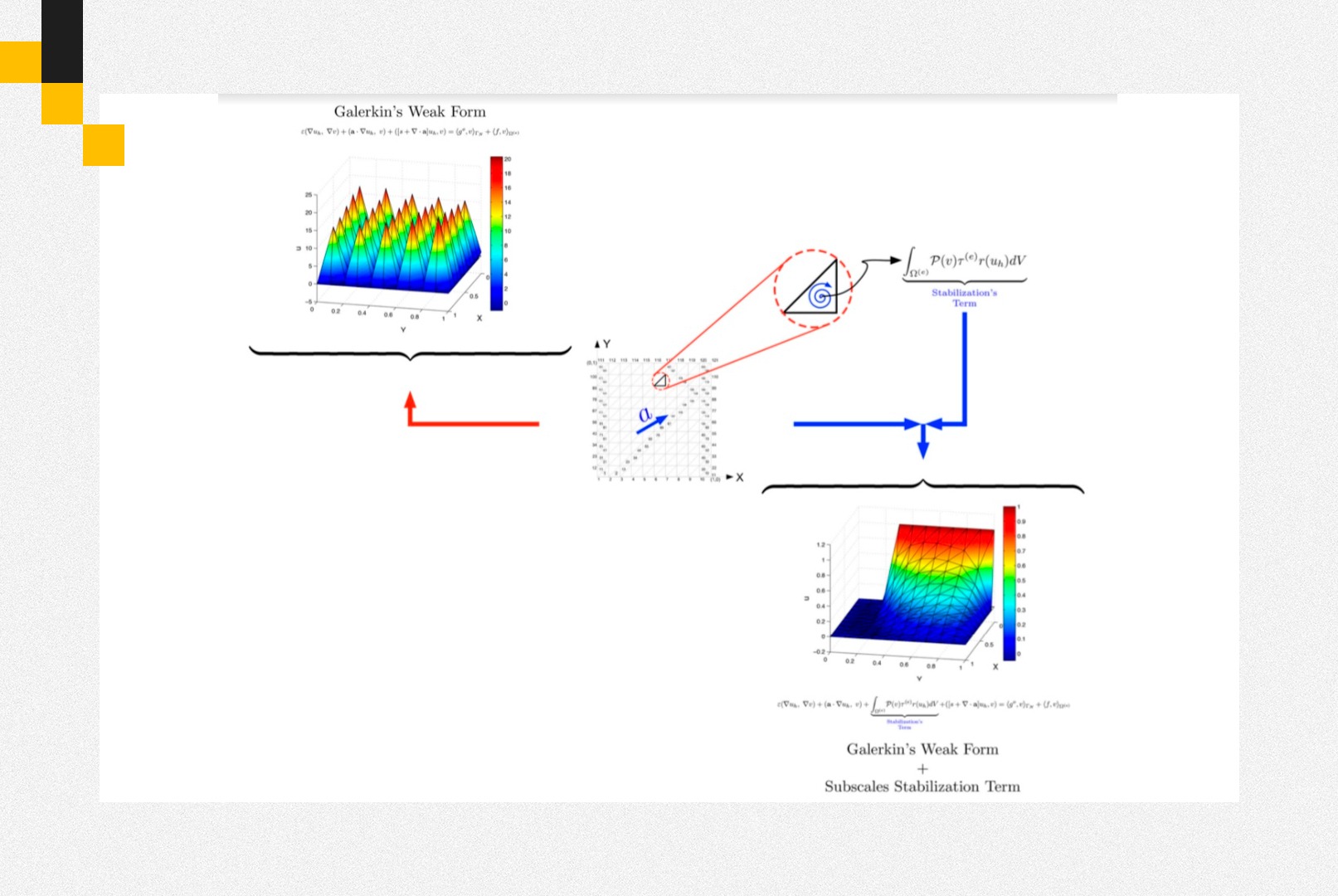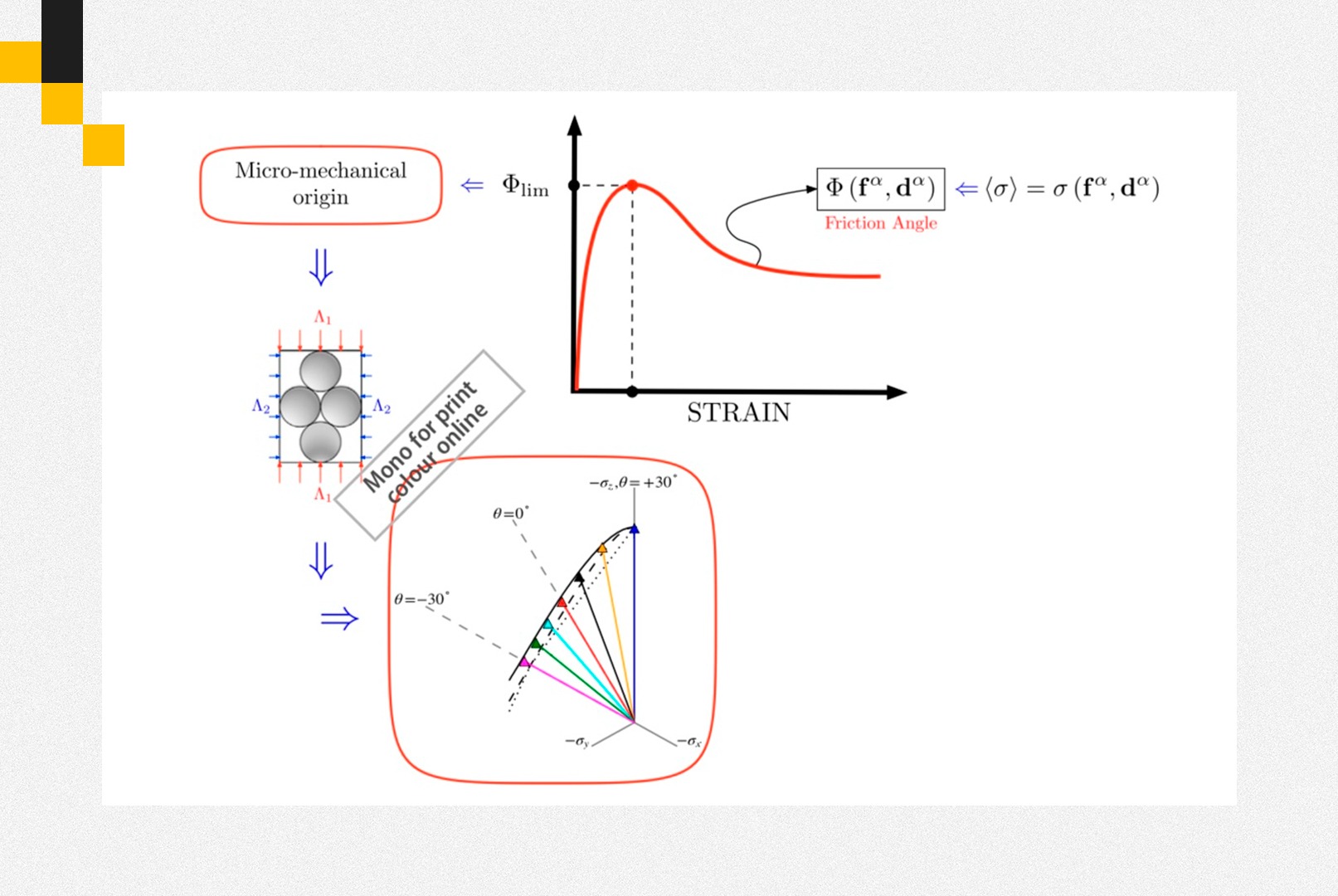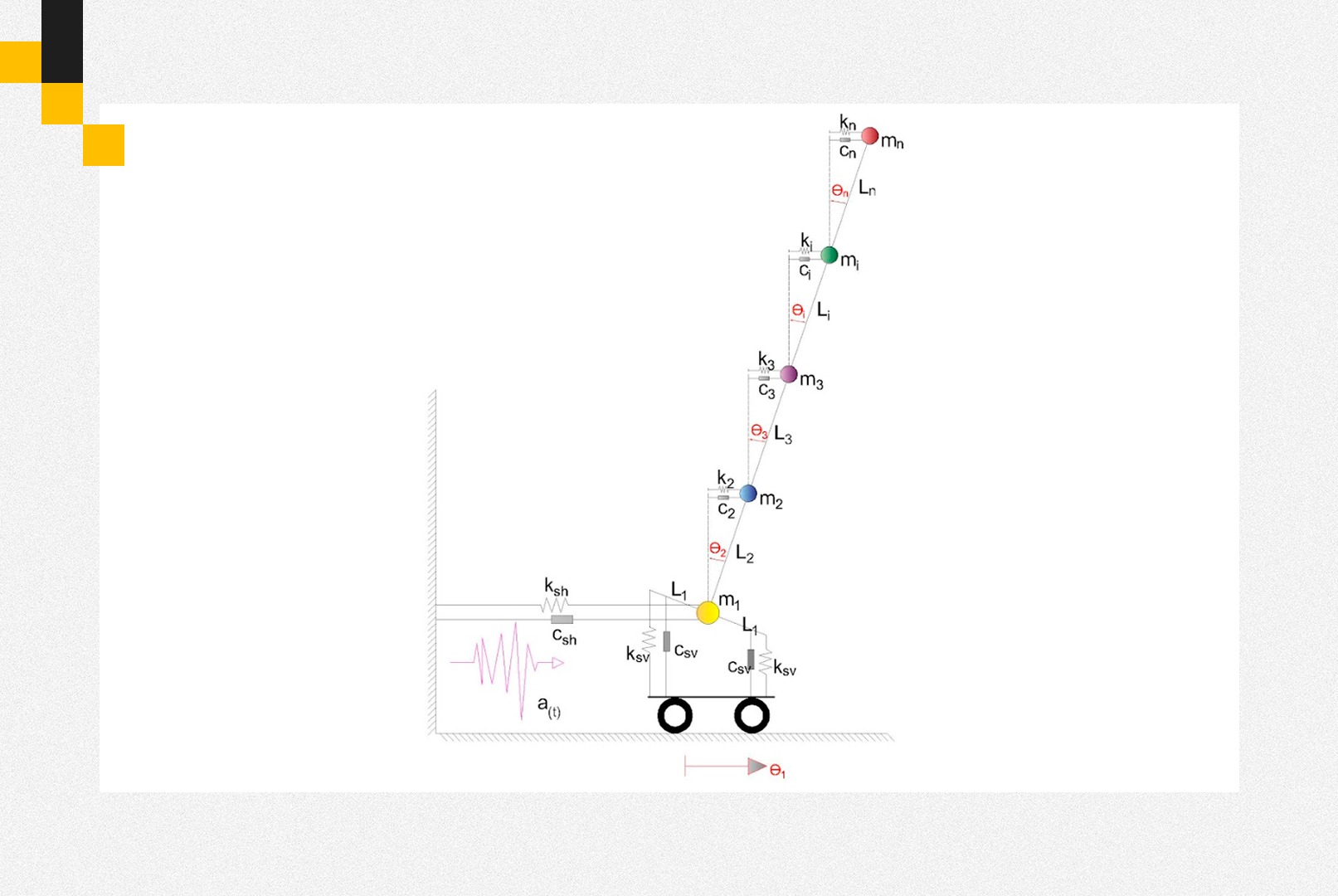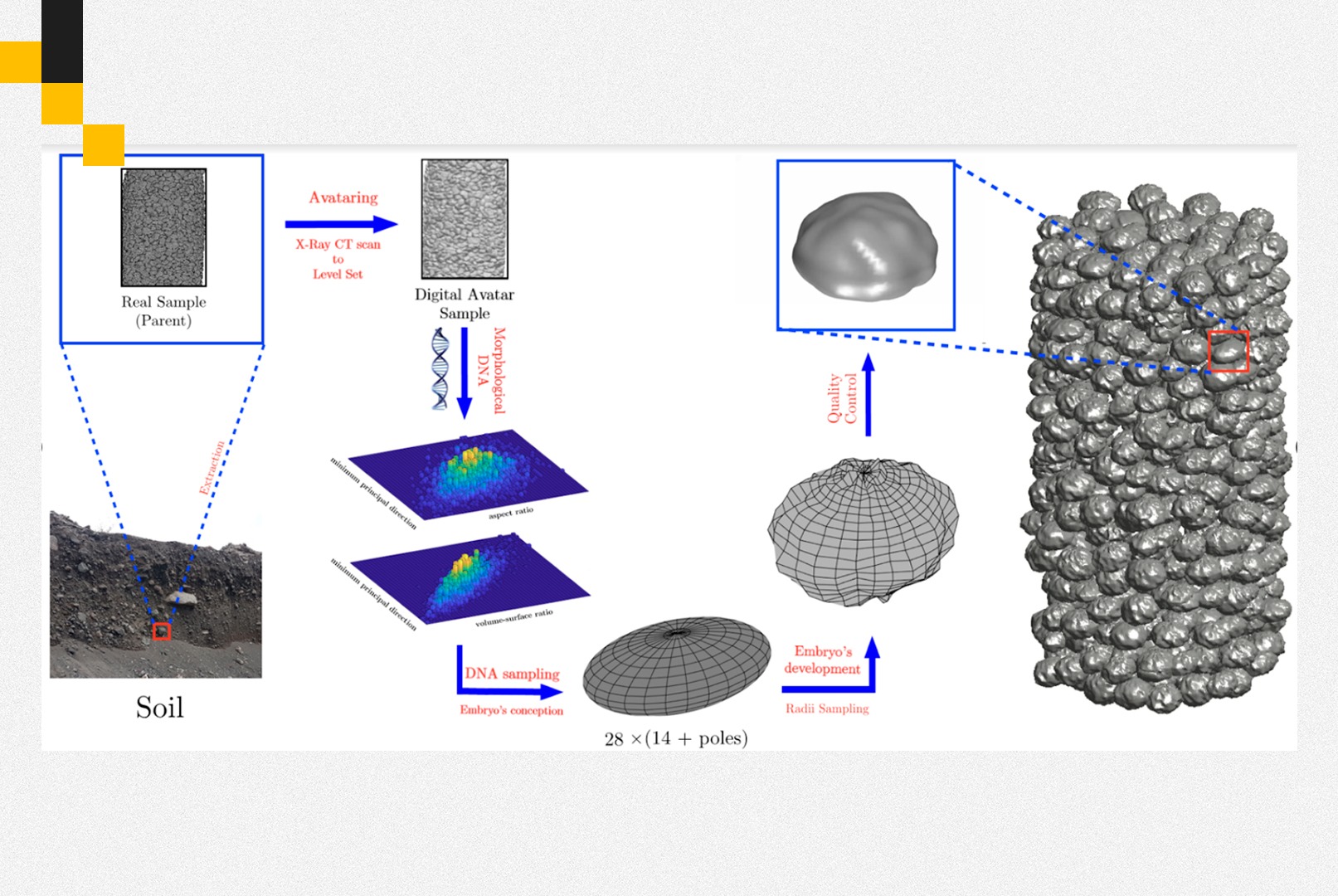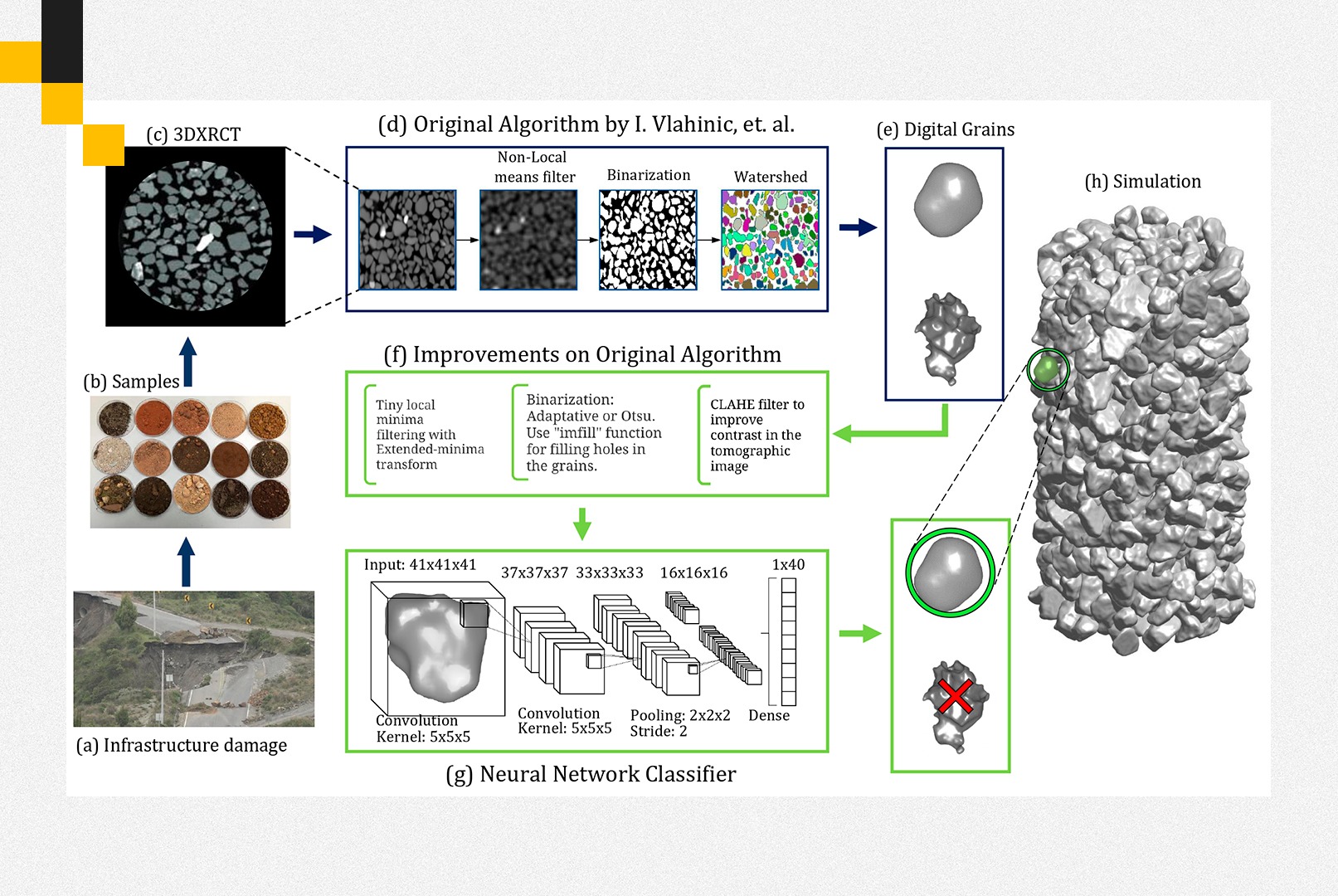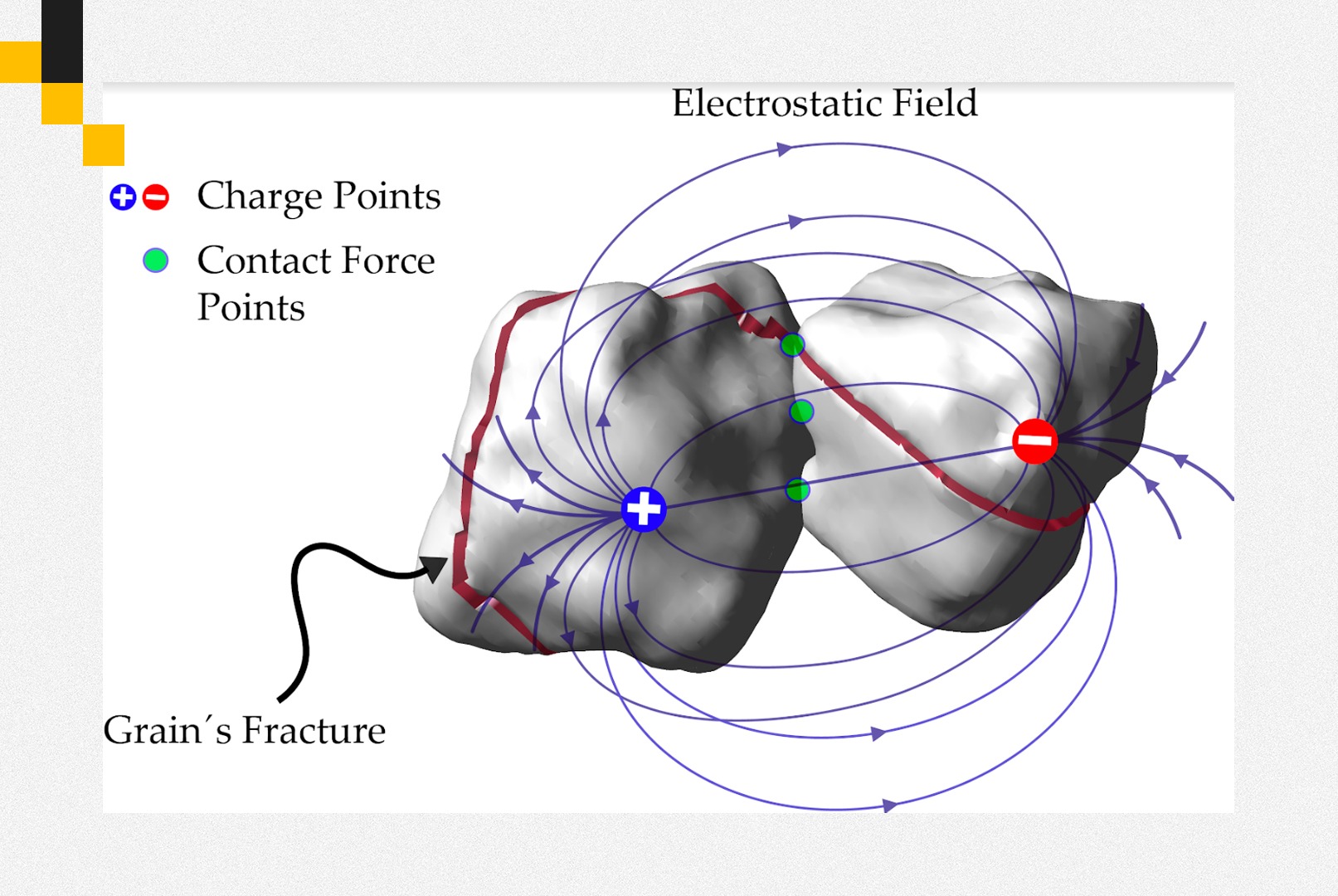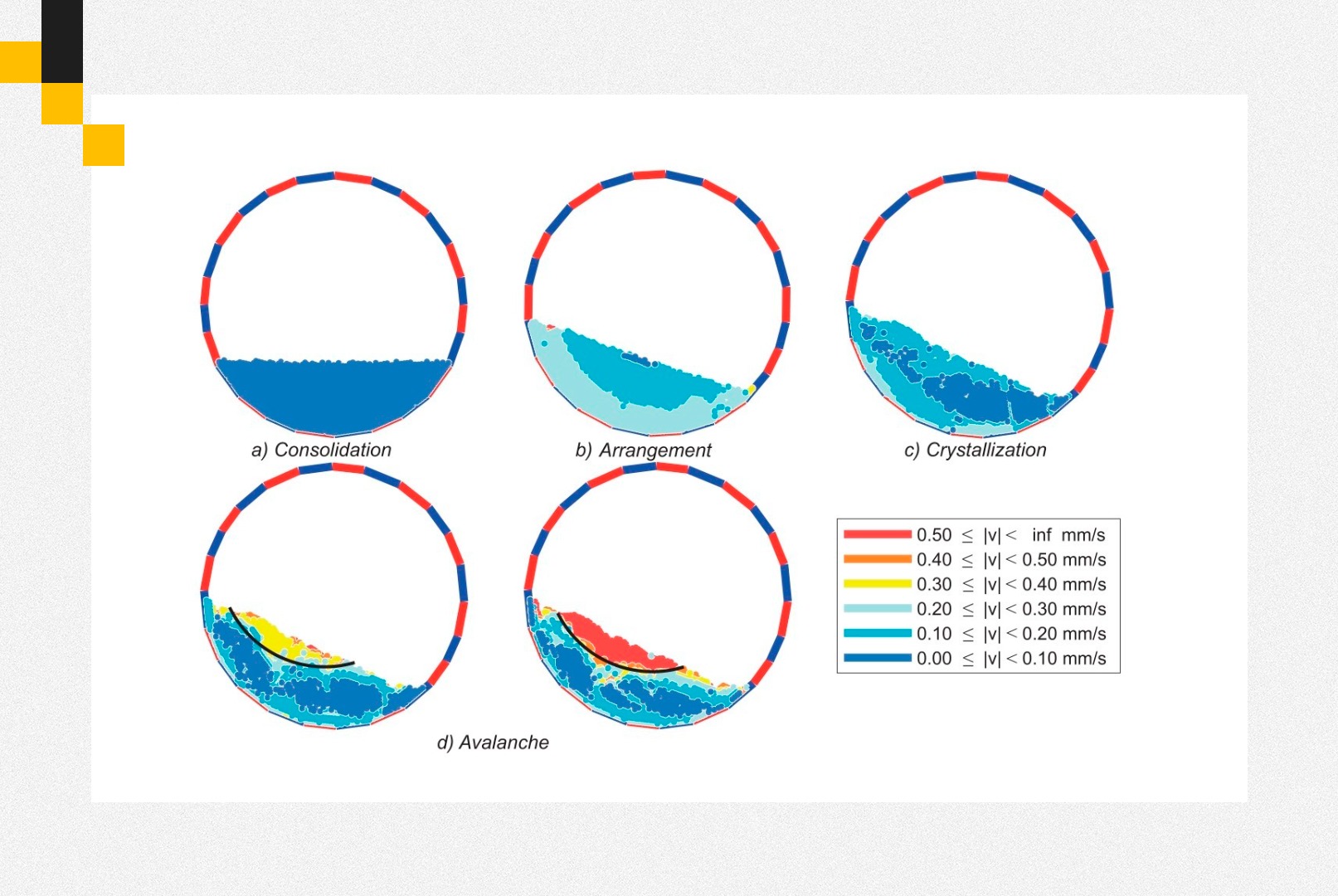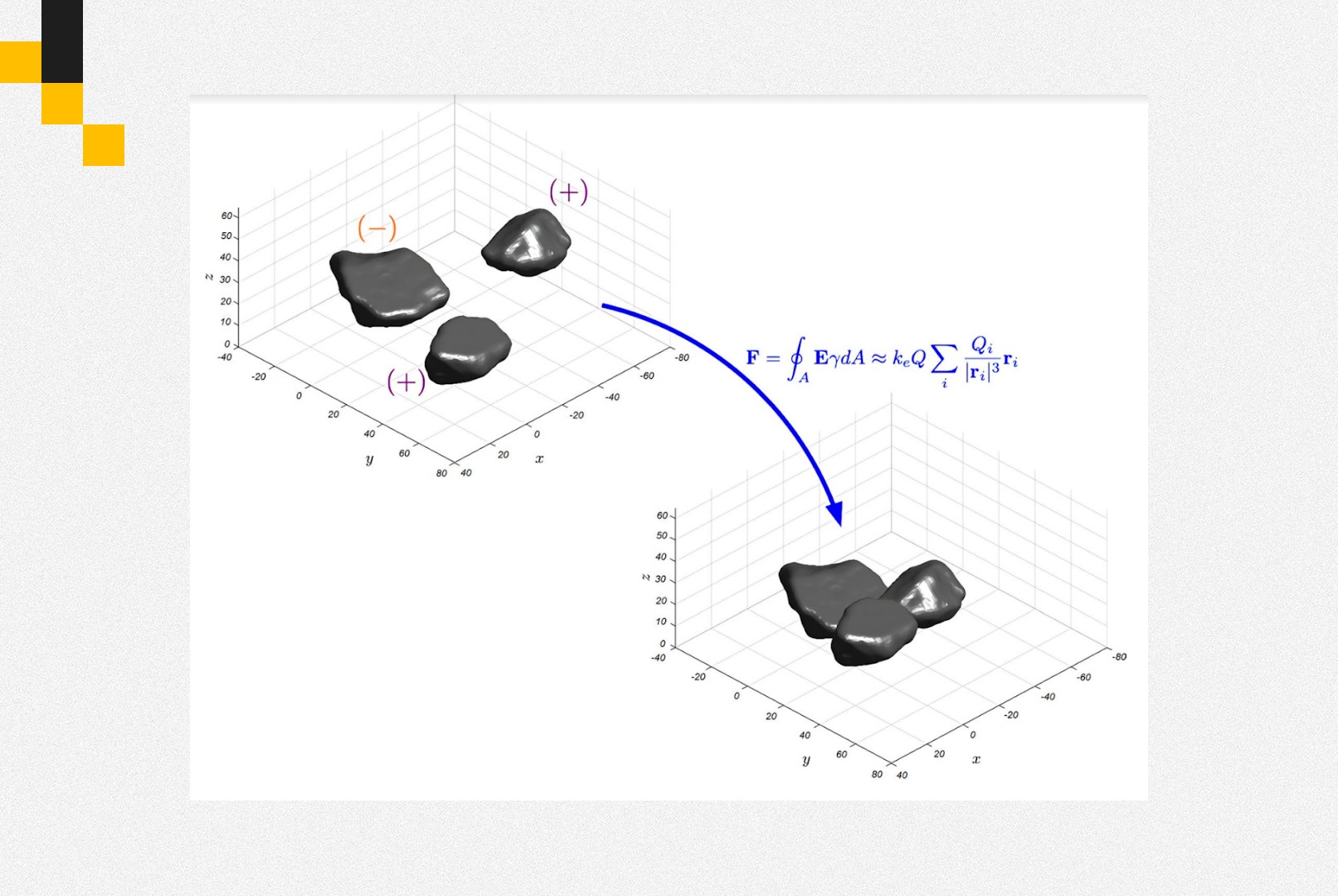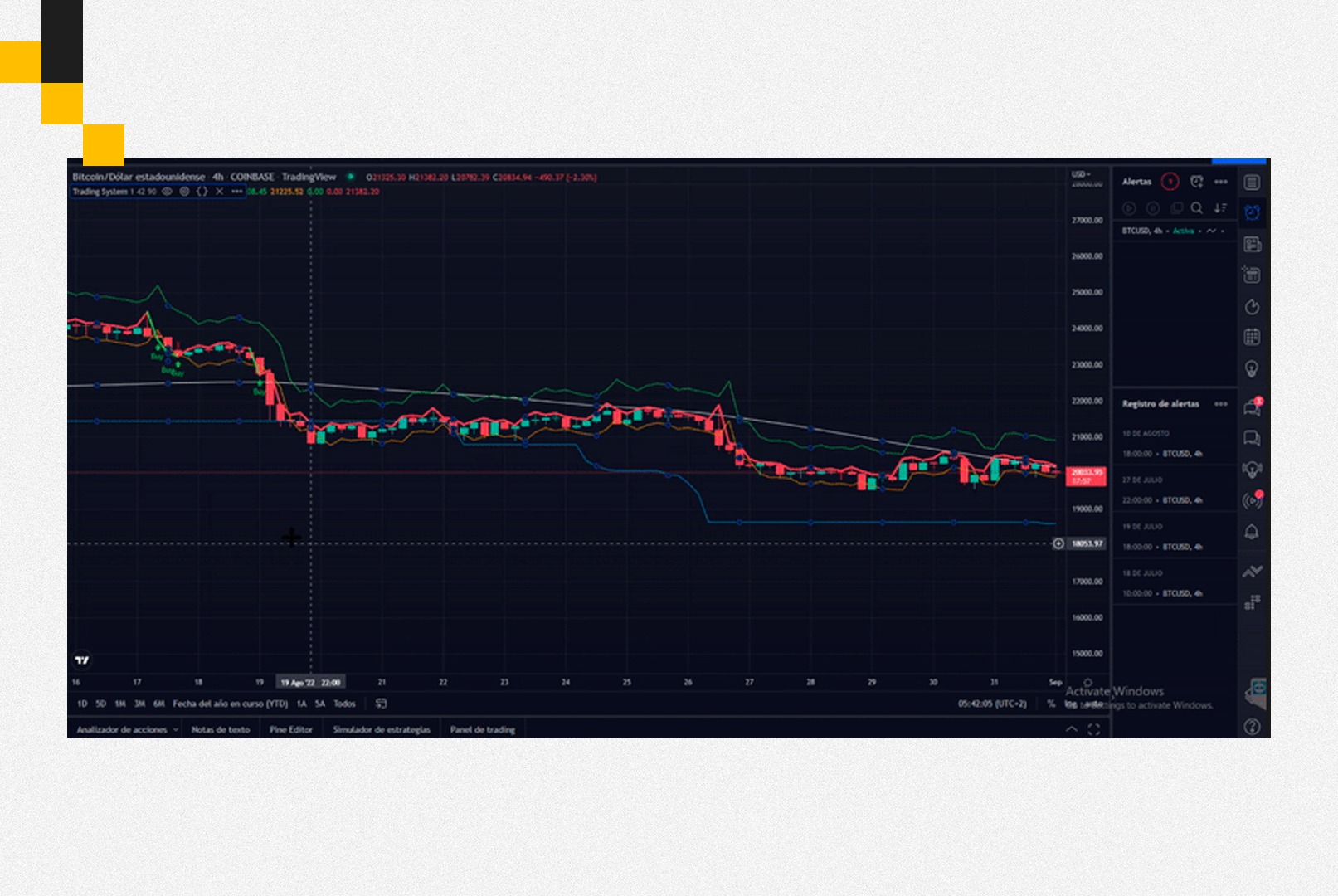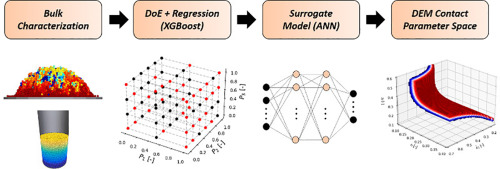
Project description
Introduction:
In this project, the implementation and combination of genetic algorithms (GA), principal component analysis (PCA) and gradient-based methods (GBM) with which to explore and find the global minimum (if there is one) have been proposed. ) of a given objective function for the calibration of the parameters of a computational scheme of discrete elements (3DLS-DEM), in such a way that the error between the results of the computational form is minimized using 3DLS-DEM and the results means of A true laboratory experiment.
Key words:
3DLS-DEM, PCA, GBM, Backanalysis, GA.
Framework:
- DEM
This project is based on the method of discrete elements DEM by its initials in English, introduced for the first time in 1971 by Peter A. Cundall, this method proposes a numerical model capable of simulating the mechanical behavior of geometric structures such as discs and spheres similar to granular materials, considering all the forces involved in the contact of these structures (Cundall, 1971). But as expected in granular materials such as the ground, each individual particle is not a sphere or a perfect disk, so this project is based mainly on the 3DLS-DEM scheme that is a variant of the classic Cundall DEM that allows to simulate the behavior of particles with arbitrary and real shape using functions of level sets as geometric basis. (Kawamoto, 2016).
The aforementioned methods allow the computational simulation of the mechanical behavior of granular materials, therefore, a triaxial test can be modeled which is commonly used in the laboratory for the measurement of the main mechanical properties of said materials, that is, angle of friction, angle of dilatance, and cohesion.
Thus, in a computational simulation of a triaxial test by means of the use of 3DLS-DEM, the soil grains and their deformations by mechanical interaction are assumed as linear elastic. On the other hand, the real (arbitrary) form of each grain is represented in the model through a scalar mathematical function called Level Set. Finally, the model also takes into account the frictional behavior when two or more grains are in contact through the application of the Coulomb friction law.
- GA
A GA genetic algorithm is a stochastic method that consists of a series of organized steps to solve a specific problem. For this, genetic algorithms borrow concepts from biology and its genetic-molecular basis. These algorithms «evolve» a population of «individuals» subjecting it to random actions similar to those that act in biological evolution such as mutations and genetic recombinations. In the same way, a selection criterion is incorporated according to which it is decided that «individuals» are the fittest, who survive, and the least fit, who are discarded.
- PCA
Principal component analysis PCA is a technique used to describe a set of data in terms of new variables or uncorrelated components. The components are ordered by the amount of original variance that they describe, so, technically, with this method the projection is sought according to which the data are better represented in the sense of the linear method of least squares. Said projection converts a set of observations of possibly correlated variables into a set of variable values without linear correlation called principal components.
- GBM
The gradient based methods are those based on the evaluation of the gradient of the objective function in order to find its maximum or minimum value (local or global). On the other hand, direct methods directly evaluate the objective function without the need to use the gradient of the function. However, most direct methods use some type of criteria to adequately and efficiently drive the optimization procedure. Hybrid methods represent the category of those methods that combine more than one type of method. (Santos, 2015)
- Backanalysis
Given that a computational simulation using 3DLS-DEM assumes a physical-mathematical model with which the mechanical behavior of a real sample of soil is approximated, and since said physical-mathematical model contains parameters inherent to it, there will always be an error of the computational simulation with respect to the real experiment. Thus, the objective is always to reduce this error as much as possible by means of the calibration of the aforementioned parameters, that is, elasticity constant Kn, coefficient of friction μ, and global damping G. (Santos, 2015)
The Backanalysis algorithm is developed in the following 5 stages:
- Because there is no exact way to predict the optimal value of the parameters of the physico-mathematical model, it is necessary to perform a multivariable interpolation to obtain an error function. For this, first values of said parameters are sampled uniformly in ranges where they are physically feasible. Thus, we obtain a set of parameters of the model that are used to perform a simulation of the triaxial test with 3DLS-DEM under the same initial and border conditions as those used in the real experiment. Then, the macroscopic parameters of material resistance are calculated according to the computational test, that is, angle of friction and cohesion, which are compared with those obtained in the real experiment. In this way you get a point of the error function. The process is repeated in repeated occasions for different sets of parameters of the model randomly selected as described in previous lines, and in this way several points of the error function are obtained that will then be used to obtain an approximation of said function by means of an interpolation.
- Once the approximation of the error function has been obtained through interpolation, it is possible to search for the global minimum of the same within the feasibility space of the parameters of the model. For this, a first exploration stage is carried out by means of an adaptive genetic algorithm. The algorithm in question is based on tournaments that allow the selection of the best individuals (those that best minimize the error function) in each generation, along with «mutation» mechanisms typically used in genetic algorithms.
- The second stage is an interface between the first stage (exploration) and the third stage (exploitation), where, once the group of the best «individuals» has been obtained, a principal components analysis (PCA) is carried out. , that precisely allows to establish and delimit the zone of the error function in which its global minimum is found.
- In this third stage, the «exploitation» of the area previously defined by the PCA is carried out using gradient-based methods (GBM) in order to find the global minimum of the error function. The values of that point are then used in the 3DLS-DEM simulation.
- In this last step it is verified, if indeed, the set of optimal parameters found by minimizing the error function provide optimal results in the 3DLS-DEM simulation with respect to the experimental results.
Execution time:
This project started in October 2018 and is still in force until now (7 months). This time was intended for the learning of the methods used in the 3DLS-DEM, recognition and selection of soil samples (Regolith simulant, and Jaramijo). Likewise, it was used to learn the algorithms, methods and programming languages involved in the Backanalysis process, such as Matlab and C ++, and training in the use of high performance computers (HPC) used to run the algorithms, methods and processes in mention.
Required equipment:
+ Backanalysis: Mac PRO procesador E5-2680 3.5Ghz 12 cores, 120 GB de RAM
+ 3DLS-DEM: Clúster EPN nodo Apollo 28 cores, 164 GB RAM
Social Benefit
This methodology based on genetic algorithms and optimization models saves a lot of time and man hours in the calibration of the parameters of the mathematical physical model involved in the simulations using the 3DLS-DEM that serve to approximate and eventually replace real laboratory experiments with its computational counterparts. Thus, its main advantage is the replacement of costly soil tests that are fundamental for the calculation, design and construction of civil works such as buildings, bridges, roads, dams, canals, tunnels, as well as the prevention of natural disasters related to the soil as for example landslides.
Cost
$30000.

